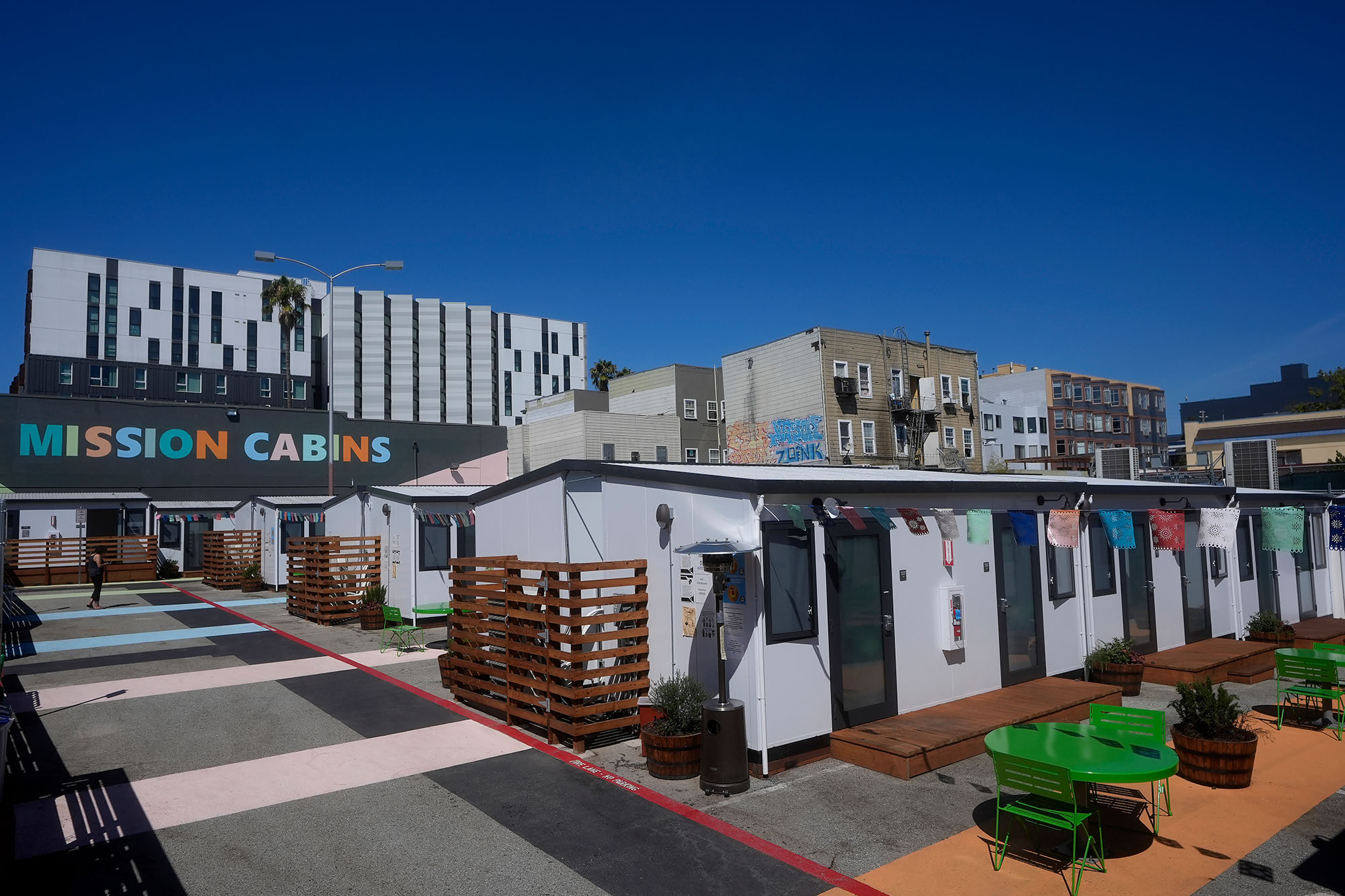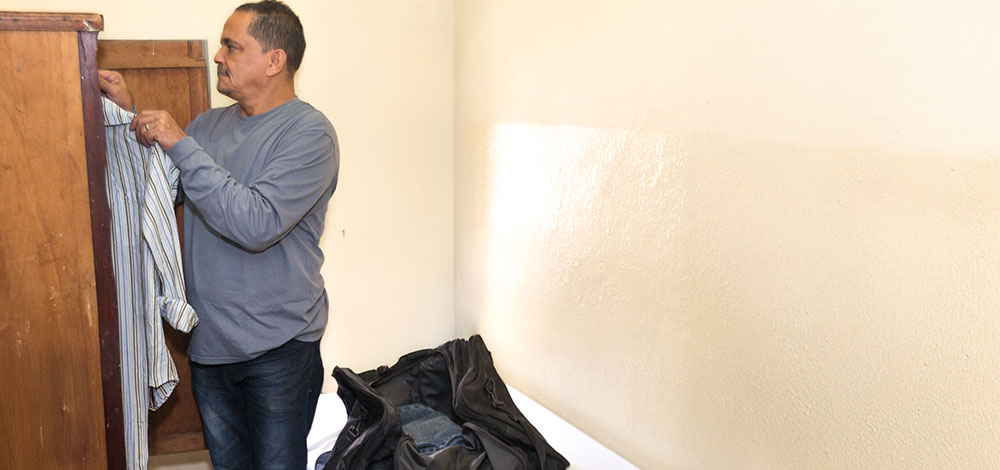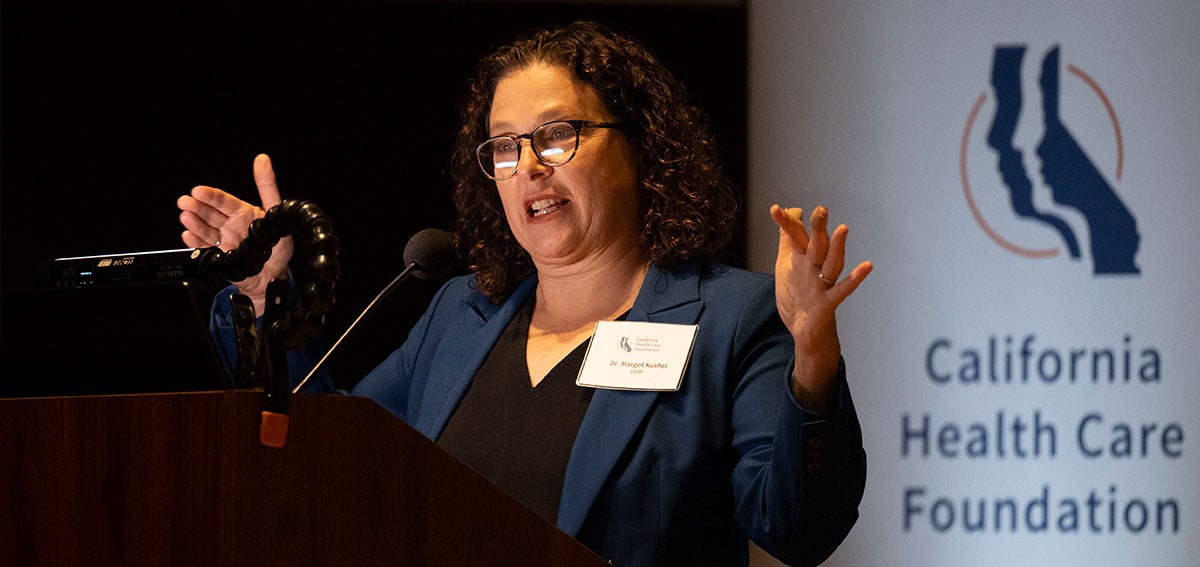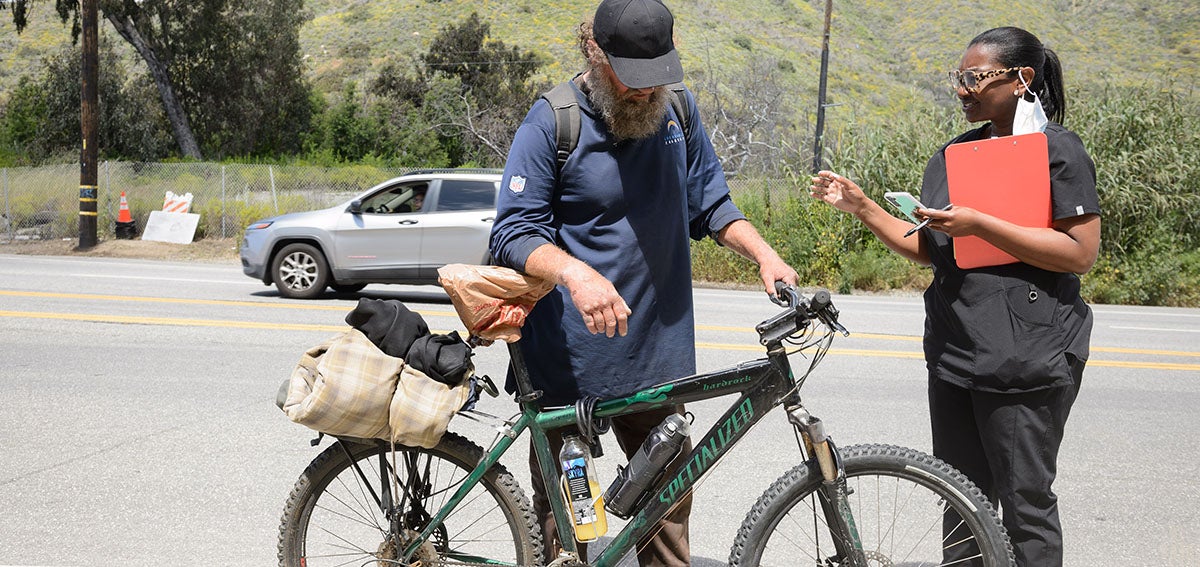|
Getting your Trinity Audio player ready…
|

To improve the health and well-being of people experiencing homelessness and people returning to housing, CHCF has brought partners from the housing industry together with UC Berkeley housing innovation experts and experts in Medi-Cal policy. This is the kind of cross-sector collaboration needed to improve the health and housing outcomes of people experiencing homelessness. With support from the foundation, the Terner Center for Housing Innovation is facilitating a working group of affordable housing developers.
Together, these builders are learning how to use the CalAIM (California Advancing and Innovating Medi-Cal) initiative’s Community Supports program to ensure that residents who get into stable housing on their properties can remain there. The working group intends to achieve its goals by strengthening the integration of health care with housing.
Recently, I talked with Carolina Reid, PhD, faculty research adviser at the Terner Center, about the housing crisis in California.
Q: Expanding the supply of affordable housing is a critical need in California. How are developers approaching funding these projects?
A: New buildings with affordable housing units are funded in lots of different ways. In some cases, the government provides a voucher that a person can use to pay their rent to a private landlord. Another way is by developing new public housing, but a 1998 federal law (PDF) makes it hard to construct new public housing units. Instead, developers use the Low-Income Housing Tax Credit (LIHTC) program.
Historically, the LIHTC has primarily been used to build units for working families and seniors. Increasingly, it’s allowing developers to create permanent supportive housing (PSH) units for people experiencing homelessness. These are designed to help people with the most acute needs, including those who have experienced chronic homelessness or have a disability. This includes a permanent housing placement with supportive services to ensure they can stay housed, such as help with traveling to medical appointments, case management services, and mental health counseling.
Q: Are those services delivered by the same organizations that build and manage affordable housing?
A: It depends. Developers of affordable housing properties, including those that have units set aside for PSH, manage their properties differently. Some PSH developers contract all their services to organizations that specialize in case management or supportive services. Others hire their own staff and may provide dedicated case management or health care services. All PSH developers work to ensure that their residents get the services they need through one of these mechanisms.
Q: In the health care sector, CalAIM promises to expand access to social supports for eligible Medi-Cal enrollees. Is the availability of Community Supports a strong incentive for affordable housing developers?
A: One of the most important aspects of CalAIM is that eligible Medi-Cal members can get access to the Housing Tenancy and Sustaining Services Community Support. Unlocking Medi-Cal dollars for this would be transformative for developers of permanent supportive housing. While the state has prioritized building PSH units, there is not nearly enough financial support to ensure that residents, especially those who have been unhoused or homeless for a long time, can successfully live in an apartment building. The housing system doesn’t have enough resources to provide the level of care needed by residents who have experienced chronic homelessness or who have complex needs. This funding gap is reducing the quality of care that PSH residents receive. For example, one case manager may be working with 40 or 45 residents. That’s well above established best practices, which tend to be closer to 20 residents per manager.
Another reason is that residents who aren’t getting the support they need are more likely to move out and return to homelessness, which undermines efforts to address California’s crisis.
“Developers are investing a lot of energy into figuring how to access Medi-Cal funding because of the tremendous potential benefits of providing person-centered care at properties offering permanent supportive housing.”
—Carolina Reid
Q: Before CalAIM, how were supportive services financed?
A: Developers have long had to cobble together funding from multiple sources to provide supportive services, and there have been important state programs focused specifically on certain populations. The Whole Person Care Pilot program and funding from the Mental Health Services Act were both important precursors to CalAIM.
However, our research has shown that across the board, the field needs more investment to expand access to services and ensure the presence of a well-trained workforce that can meet people’s care needs. I know it can sometimes feel like we aren’t making progress, but the evidence shows that permanent supportive housing is an effective approach to ending chronic homelessness. I have talked to many PSH residents who say it has transformed their health and stabilized their families. That’s why we want to connect CalAIM with PSH services — because it works. And evidence shows that when we invest in housing and permanent supportive services, it improves people’s health and people stay housed long-term.
Q: You’re now convening a working group of PSH providers to identify and overcome barriers to accessing CalAIM. What have you learned?
A: Managed care plans tend to think of the housing supports under CalAIM as a short-term goal: An organization successfully provides housing navigation services and moves a member into permanent housing. Maybe they also authorize six months of tenancy sustaining services. Then, they assume the problem is solved and no longer needs support.
But people often need episodic support throughout their time in permanent supportive housing. Tenancy sustaining services are almost never a ‘one and done’ situation. When a developer plans to build permanent supportive housing, they have to map out the financing of that property for 15 years. This includes not just maintenance of the property, but also the staffing needed to support residents over those years. A developer can’t plan for a long-term, on-site case manager if the managed care plan has to re-authorize case management services every six months.
These Community Supports can be time limited or offered just once in a lifetime. Say the person successfully moves into the property, even for several years. Later they have a traumatic episode and need supportive services again. The managed care plan may be thinking, “We already provided six months of tenancy supportive services. We succeeded. Why should we authorize it again?”
Another big challenge is that people are mobile, and housing units are not. A person might move into a unit and be eligible for tenancy sustaining supportive services, which the developer can then use to pay for staff. But if that person moves away, then the developer loses the funding that supports that unit and the property-level staff.
Although there’s a lot of uncertainty and risk for a developer in counting on Medi-Cal funding to provide supportive services, developers are investing a lot of energy into figuring out these challenges because of the tremendous potential benefits of providing person-centered care at PSH properties.
“We’re all going to benefit if we figure out how to bring these two complex and fragmented systems together.”
—Carolina Reid
Q: What other barriers to accessing Community Supports have you heard about from the developers in the working group?
A: They are already working within a fragmented regulatory and financing system. Every property that includes PSH units has multiple funding sources. That means navigating multiple sets of regulations and reporting requirements. Then you add CalAIM, which adds managed care plans and their regulations to the mix.
In addition, many PSH developers work across multiple counties. Different counties have different managed care plans. That lack of standardization across plans is a huge implementation barrier.
Another challenge is that the record keeping for affordable housing looks really different from the record keeping needed for billing Medi-Cal. PSH developers also have to make their data systems HIPAA-compliant, while Homeless Management Information Systems don’t integrate easily with managed care plan and Medi-Cal systems. These requirements add significant administrative costs at the front end, and not all developers can afford them.
Q: Many of those challenges are similar to the ones described by community-based organizations and other non-traditional providers of Medi-Cal services. What approaches or potential solutions has the working group focused on?
A: The first real goal of the working group has been to demystify CalAIM. It’s a whole new set of concepts and institutions, and there’s a lot of information sharing that’s needed. How are managed care plans organized? What are Community Supports? What things should an affordable housing developer consider as they decide whether to become a Community Supports provider?
The second has been to share different models that PSH providers are using, and to talk through how CalAIM has changed organizations’ supportive services models. We’re lucky to have a few organizations participating who have been successful at connecting the dots between their residents and CalAIM. For example, some are becoming Community Supports providers for the wider community, not just residents living in their properties. That seems to be working particularly well in places where there may be less local capacity for providing Community Supports.
This would be especially impactful outside of big urban areas with a lot of existing service organizations, such as rural areas and the Central Valley.
Another emerging model is for developers to build Community Supports into their properties incrementally. Say a developer has a building with 100 units. If they were to commit to providing Community Supports to the residents of all those 100 PSH units, they would be exposing themselves to a lot of financial risk if they end up not getting reimbursed due to lack of eligibility or re-authorization denials. Instead, developers are being conservative by budgeting maybe 10% of their total units to CalAIM. That gives them enough funding to support one additional case manager, but if the CalAIM funding doesn’t come through, it’s not going to put the entire property at risk.
Q: How important is it for managed care plans to have dedicated staff who understand not just homeless services, but also housing?
A: Some plans have really embraced housing as a social determinant of health and have staff who are advancing innovative partnerships. But I think there is a need for all managed care plans to learn about housing systems and how they work. Housing is critical for health, and I only see it becoming a stronger partner for health care going forward. So, it is within managed care plans’ interests to develop a shared language with housing providers and lay the foundation for stronger collaboration between these sectors.
We’re all going to benefit if we figure out how to bring these two complex and fragmented systems together and ensure that everyone gets the housing and services they need.
Authors & Contributors


Jungho Kim
Jungho Kim is an Oakland-based photographer. He takes photos from his perspective as part of the Korean-adoptee diaspora — forever an outsider in an insider’s world — and is heavily influenced by his experiences living in the US, Japan, Sweden, and Korea. His work has focused on revealing the stories of those exploring their identities, experiencing inequity, or learning to adapt to our changing climates.
During the COVID-19 pandemic he spent extensive time with unhoused people and organizations providing them with basic necessities and community support. Kim also covered dozens of protests during the Black Lives Matter protests following the killing of George Floyd, including direct actions like the toppling of statues in San Francisco’s Golden Gate Park. In 2019, he documented the pro-democracy movement in Hong Kong, capturing quiet moments of resistance, defiant protesters, and violent crackdowns by police.




